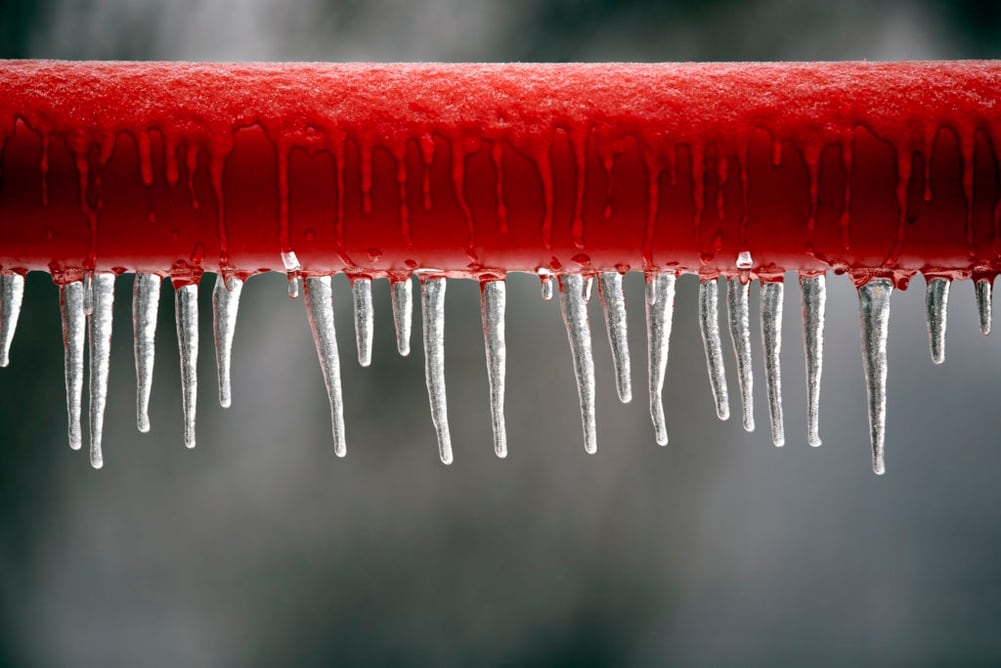
Any time the temperature drops below 32 degrees, your plumbing is at risk of freezing and bursting. Be aware that the most vulnerable pipes are those located against exterior walls. Follow these tips to prevent and thaw frozen pipes this winter.
Protect Your Pipes
- Install pipe insulation: It’s wise to insulate any pipes that run through the crawlspace, attic, or garage to protect against freezing temperatures in these areas.
- Use heat tape: This product wraps around pipes and delivers a small amount of heat to prevent freezing. It works best when installed beneath pipe insulation.
- Caulk around plumbing penetrations: Caulk stops cold air from getting in. Besides protecting against frozen pipes, sealing air leaks also reduces your energy bills.
- Keep the temperature up: Even if you’re going out of town, set the thermostat no lower than 55 degrees to help prevent frozen pipes. Keep under-sink cabinet doors open as well to allow heated air to circulate the plumbing.
- Know how to shut off the water: Every plumbing appliance and fixture in your home should have a shut-off valve behind it. Learn the location of your main water shut-off valve as well, since turning off the water is an important step when limiting property damage if a pipe freezes and bursts.
Identify Frozen Pipes
Anytime the temperature drops below 32 degrees outside, be on the lookout for signs of frozen pipes. These may include:
- Little to no water flow when you open a faucet
- Frost buildup on an exposed pipe
- Strange smells coming from a faucet or drain
What to Do if Your Pipes Freeze
- Shut off the main water line: Even if a frozen pipe has not burst, turn the main water shut-off valve just in case.
- Keep the faucet open: This reduces pressure and gives water somewhere to go as the ice melts.
- Thaw an exposed pipe: If the frozen pipe is accessible, warm it with a hairdryer, heat lamp, portable space heater, electric heating pad, or hot towels. Never use an open flame device, and avoid electrical heating appliances if there is standing water.
- Thaw a hidden pipe: Thawing a pipe behind a finished wall is trickier. You may choose to turn up the thermostat and wait, tear out a section of the wall to access the pipe, or use an infrared lamp to heat the plumbing through the wall.
- Check for other frozen pipes: Test all the faucets in your home for signs of frozen pipes. If you can’t find the frozen area or the pipe is completely inaccessible, turn off the main water line. Then, call a licensed plumber for emergency plumbing repair.
Puget Sound Plumbing and Heating is a family-owned and operated business with over 20 years of experience serving the Seattle area. If you need help with your plumbing, please contact us online or call (206) 350-0079 at any time of day or night, and we’ll be there for you!


